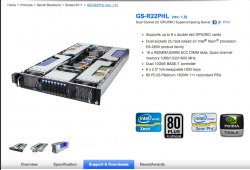I wonder how that thing compares to the 4GB GTX 680.
It's got more memory and more configuration cores. Can I assume it will get better benchmarks? Any guesses on the bandwidth?
Regarding benchmarks, in the article referenced, the author - Hassan Mujtaba - states: "The only thing that would be changed [from the current Titan] is the GK110 with reduced core count around 2304-2496 and a 5 GB GDDR5 (384-bit) memory. Hopefully, we would be looking at a lower price range around $659-$759." [Emphasis and bracketed material added.] If that is true it would mean that the Titan LE would get much better benchmarks than the 4GB Galaxy GTX 680s that I own, even though mine are the highly overclocked version.
Regarding bandwidth, here's what Nvidia says, in relevant part, about the Titan: "NVIDIA® Kepler™ architecture gives you 2,688 NVIDIA CUDA® cores and 4.5 teraflops of gaming horsepower. Plus, GTX TITAN delivers a 384-bit memory interface running at a blazing fast 6 Gbps for an amazing 288 GB/s of memory bandwidth ... ." So as far as the memory bandwidth is concerned, I would't expect it to change so long as the memory clock (6.0 Gbps) remains the same. The memory interface (GDDR5) and interface width on both cards would be the same (384-bit GDDR5). Only the cores would be reduced by from 8% - 15%, depending on the final core count and the amount of memory would be reduced by 1 GB. That wouldn't be much of a hit to creative applications that use CUDA. But this would indicate that contrary to my earlier belief that OEMs, with Nvidia's blessing and more importantly Nvidia's price support, would soon drop the price of the Titan to the $700 - $800 range, that isn't going happen any time soon and, instead, a slightly weaker Titan (the Titan LE) will just be inserted to fill the gap. However, the more that I think about the prowess of the Titan, particularly when compared to the $4.5K+ Tesla K20X, I guess that I should not be at all surprised, given what you can do with a Titan to enhance its performance. The Titan has actually flipped positions with K20X for a whole lot less. So the $1K+ price tag isn't that bad in the end.


